Xi stresses ethnic unity, strengthening sense of com-
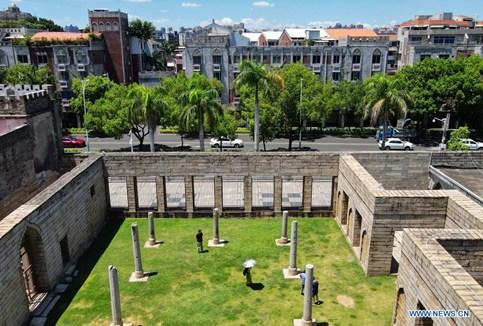
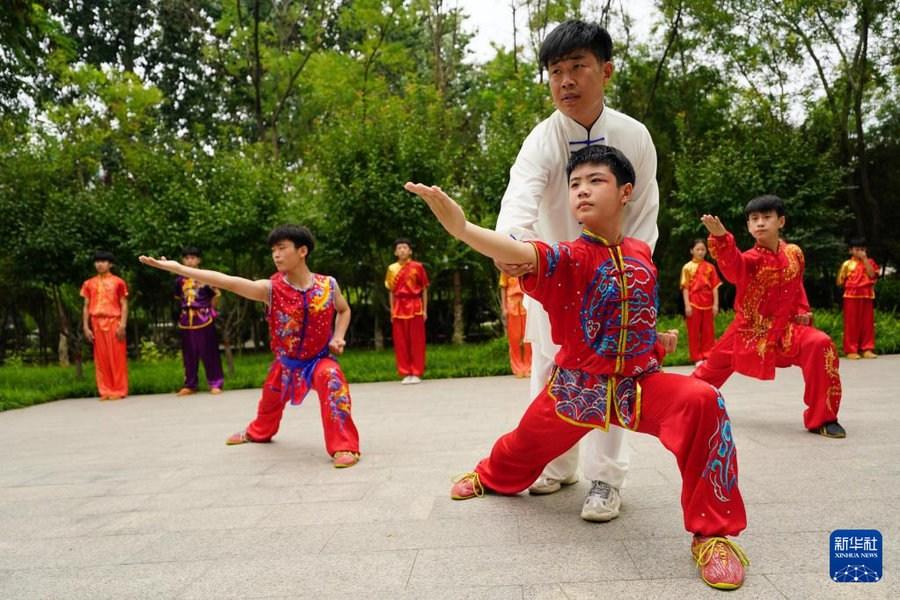









Paper cutting is one of the most popular decorative Chinese handicrafts. It is popular for its low cost and artistry. Rural women often make paper cuttings in their spare time when farming is not busy. As a reflection of its philosophical origins, paper cutting is as comprehensive as it is attractive. Moreover, folk paper cutting conveys the content and nature of traditional culture with its own particular language.


Paper cutting is one of the most popular decorative Chinese handicrafts. It is popular for its low cost and artistry. Rural women often make paper cuttings in their spare time when farming is not busy. As a reflection of its philosophical origins, paper cutting is as comprehensive as it is


attractive. Moreover, folk paper cutting conveys the content and nature of traditional culture with its own particular

The history of paper cutting can be dated back to the 6th century. From the 7th to 13th century, paper cutting became popular especially during Chinese festivals. The art spread to the rest of the world in the 14th century. In rural areas, paper cutting is traditionally a handicraft for women. In the past, every girl was supposed to master it and brides were often judged by their skills. Professional paper cutting artists are, on the other hand, usually males who earned guaranteed incomes by working in workshops.



Paper cuttings were mainly used in regional rituals, decorations and styling. In the past, paper was cut into images of people or things such as money and clothes, which were buried with the dead or burned at funerals.
This is a superstition that these things burned or buried would accompany the dead in another world. Pa-

per cuttings were also used to decorate sacrifices. Today, paper cuttings are used as decorations, and they are usually made with red paper, which is the most popular and propitious color in Chinese culture. They adorn walls, windows, doors, pillars, mirrors, lamps and lanterns, and they themselves can also be given as gifts. Paper cuttings were also used to serve as the mould pattern for making and spray paintings.
Paper cuttings are popular because of their expression of wishes and hopes. In ancient times, limited territory, re-

stricted culture together with the occurrence of natural disasters made people desire for a happier living. Wishes for wealth, health and longevity are conveyed through paper cuttings. For example, during the Chinese New Year, the character ‘ Fu (福, blessing)’is pasted upside down on the door to express people’s wish for the coming of ‘Fu’.At a wedding ceremony, a red paper cutting with the character ‘Xi (囍, double happiness)’is a traditional and essential decoration, while patterns of dolls, gourds or lotus symbolize wishes for children. At a birthday party of an old person, paper cuttings with the character ‘Shou (寿, longecity)’are often seen.



As of 2015, 48 noteworthy Chinese sites were inscribed on UNESCO's World Heritage List: 37 Cultural Heritage, 8 Natural Heritage, and 3 Cultural and Natural Heritage. China is second only to Italy for World Heritage sites.




The Temple of Heaven, founded in the first half of the 15th century, is a dignified complex of fine cult buildings set in gardens and surrounded by historic pine woods. In its overall layout and that of its individual buildings, it symbolizes the relationship between earth and heaven the human world and God's world which stands at the heart of Chinese cosmogony, and also the special role played by the emperors within that relationship.
The Temple of Heaven is an axial arrangement of Circular Mound Altar to the south open to the sky with the conically roofed Imperial Vault of Heaven immediately to its north. This is linked by a raised sacred way to the circular, three tiered, conically roofed Hall of Prayer for Good Harvests further



to the north. Here at these places the emperors of the Ming and Qing dynasties as interlocutors between humankind and the celestial realm offered sacrifice to heaven and prayed for bumper harvests. To the west is the Hall of Abstinence where the emperor fasted after making sacrifice. The whole is surrounded by a double walled, pine-treed enclosure. Between the inner and outer walls to the west are the Divine Music Administration hall and the building that was the Stables
for Sacrificial Animals. Within the complex there are a total of 92 ancient buildings with 600 rooms. It is the most complete existing imperial sacrificial building complex in China and the world's largest existing building complex for offering sacrifice to heaven. Located south of the Forbidden City on the east side of Yongnei Dajie, the original Altar of Heaven and Earth was completed together with the Forbidden City in 1420, the eighteenth year of the reign of the Ming Emperor Yongle. In the ninth year of the reign of Emperor Jiajing (1530) the decision was taken to offer separate sacrifices to heaven and earth, and so the Circular Mound Altar was built to the south of the main hall for sacrifices particularly to heaven. The Altar of Heaven and Earth was thereby renamed the Temple of Heaven in the thirteenth year of the reign of Emperor Jiajing (1534).



The current arrangement of the Temple of Heaven complex covering 273ha was formed by 1749 after reconstruction by the Qing emperors Qianlong and Guangxu.
The siting, planning, and architectural design of the Temple of Heaven as well as the sacrificial ceremony and associated music were based on ancient tenets relating numbers and spatial organisation to beliefs about heaven and its relationship to people on earth, mediated by the emperor as the ‘Son of Heaven’. Other dynasties built altars for the worship of heaven but the Temple of Heaven in Beijing is a masterpiece of ancient Chinese culture and is the most representative work of numerous sacrificial buildings in China.
The Temple of Heaven is a masterpiece of architecture and landscape design which simply and graphically illustrates a cosmogony of great importance for the evolution of one of the world’s great civilizations.
The symbolic layout and design of the Temple of Heaven had a profound influence on architecture and planning in the Far East over many centuries.
For more than two thousand years
China was ruled by a series of feudal dynasties, the legitimacy of which is symbolized by the design and layout of the Temple of Heaven.
The Temple of Heaven covers an area of 273ha and its ancient build-
landscape and pathways have retained their historic layout. All elements necessary to express the value of the property are included within the boundaries of the property area. This ensures the integral representation of its uniqueness as a traditional Chinese cultural landscape.
The attributes such as the landscape layout and historic buildings are preserved either as built originally or as reconstructed in the Qing dynasty. The management and maintenance is carried out strictly in accordance with records in historical literature and archaeological evidence, to preserve the historic condition, while the exhibitions and displays are also designed to reflect the authenticity. The general layout and architectural features of the property vividly and distinctly demonstrate the traditional Chinese philosophical ideas, cosmogony, sacrificial rituals and scientific and artistic achievements,as well as genuinely reflect the political and cultural concepts and historic characteristics at that time.

At the highest level the Temple of Heaven is protected by the Law of the People’s Republic of China on the Protection of Cultural Relics.

In 1961, the Temple of Heaven was included by the State Council of the People’s Republic of China on the first group of State Priority Protect-
ed Sites. On the basis of efficient implementation of pertinent laws such as the Constitution of the People’s Republic of China, Criminal Law of the People’s Republic of China, the Law of the People’s Republic of China on the Protection of Cultural Relics, the Law of the People’s Republic of China on Environmental Protection, and the Law of the People’s Republic of China on Urban Planning, relevant regulations on conservation and management have been formulated according to the practical situation. Any proposed measures or projects to be taken inside and outside the property area that may have any impact on the heritage values is prohibited without the approval of the national administration on cultural heritage. A buffer zone has been established. At present, the main sacrificial building complexes including the Hall of Prayer for Good Harvests, the Circular Mound Altar, the Fasting Palace and the Divine Music Administration are all integrally preserved. The flourishing trees in the property remind people of the heyday of the site. The authenticity and integrity of the property are maintained and preserved by strictly observing pertinent principles and provisions of the Law of the People’s Republic of China on the Protection of Cultural Relics and through regular and rigorous maintenance and conservation projects. The management system of the Temple of Heaven has taken into account a wide range of measures provided under planning, heritage legislation and policies of the Central Government and Beijing Municipal Government. The Master Plan of Temple of Heaven on Protection and Management which provides the policy framework for the conservation and management of the Temple of Heaven is under formulation and will be presented to the World Heritage Committee as soon as it is complete.




Liu Haiyong studied classic Chinese painting at two prestigious art academies at home, China Academy of Art in Hangzhou, Zhejiang province, and Central Academy of Fine Arts in Beijing, which value cultural traditions and were pioneers in introducing international art into the curriculums.

He specializes in the creation of the flower-and-bird genre of painting, done in the loose, semi abstract xieyi style which prioritizes a philosophical touch over accurate depictions.
Wind over the World, Liu's exhibition at the National Art Museum of China in Beijing, is dedicated to his endeavors in the field of xieyi.In his work, Liu steps aside from the traditional microscopic world of plants and small animals. He instead has focused on the presentation of
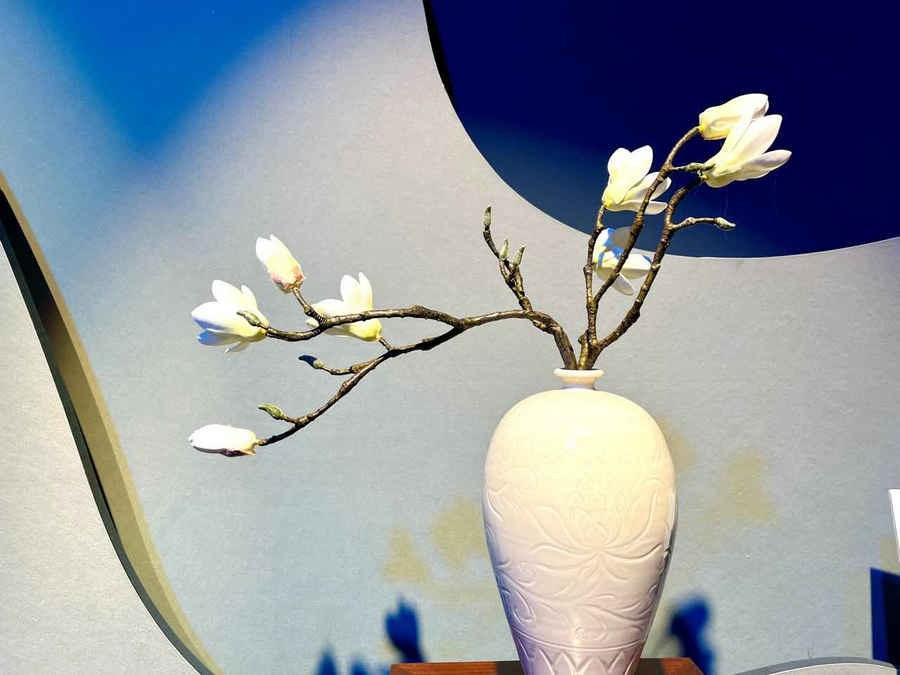 Liu Haiyong at Wind over the World, his exhibition at the National Art Museum of China. [Photo provided to China Daily]
Liu Haiyong at Wind over the World, his exhibition at the National Art Museum of China. [Photo provided to China Daily]






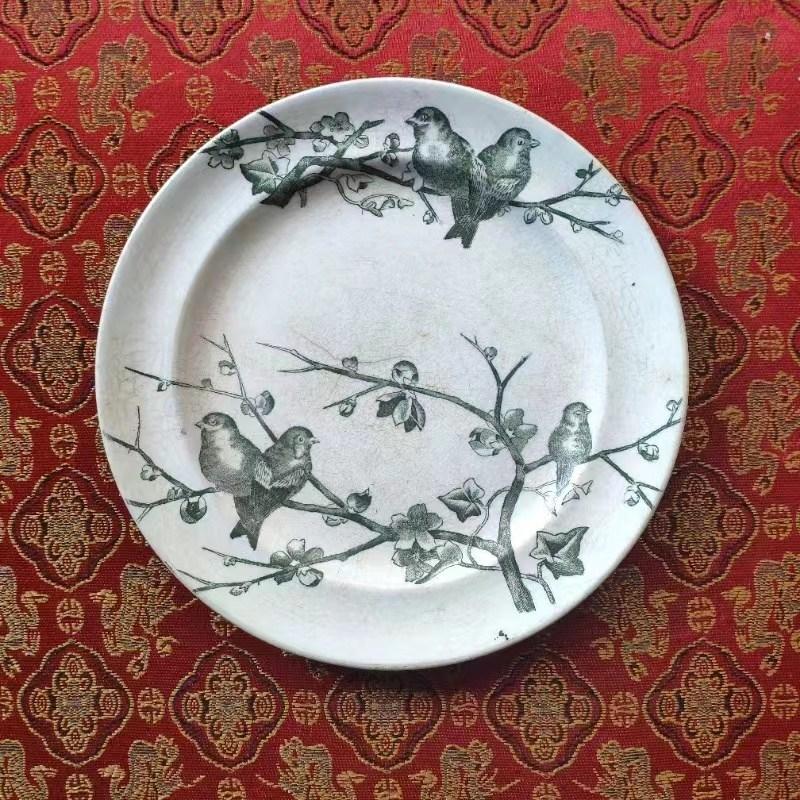







The art of making and studying rubbings, which reproduce the epigraphs on archaic bronze plates, primitive stone drums and historic tablets, is an important part of Chinese culture. The reproductions on paper have helped preserve the essence of classic art and culture, allowing people to understand the evolution of the forms of Chinese characters, the brush writing styles and the rich information embodied within.
















Half of china’s population lives in the south and eastern coastal cities like Shanghai, Beijing and Guangzhou. But far away from the heavily populated east, China’s western provinces of Tibet, Xinjiang and Yunnan are consists of more divers and mysterious landscape and culture. Extremely harsh and unforgiving landscapes forge strong resourceful people with unique lifestyle and heritage. Even in these remote regions, the winds of change are blowing hard and the future is arriving fast as china’s secret lands are revealed. Far to the south west of Beijing, China touches the Himalayas, an empire of mountains caved out by massive rivers into sheer valleys and dense subtropical untamed jungles. Here is the lash province of Yunnan. Yunnan covers the area even lager than Germany and supports the population of 48 million. They may all share the same land, but here at the crossroads of six Asian nations, the people are as diverse as you can get. 25 out of 55 distinct ethnicities of China live in harmony here. No other province in China has this much of ethnic diversity. Over the thousands of years the natural barriers in this remote south western frontier of China have created isolated fortresses of cultures incubating some of the world’s most extraordinary ways of life. Changyuan is a small county nestled in the rugged mountains near the China’s border with Myanmar is populated with around 180000 people. Changyuan is home to mysterious Wa people of China. Wa means mountain folks. Wa people are living in steep mountain slopes between
Mekong and Salween rivers and they nurtured unique culture. Wa people worships many Gods and practice primal rituals such as buffalo sacrificing and even head hunting. Today in modern Changyuan opening up its doors and these secrets are being slowly uncovered. “ The Wa people came from Sigangli. In Wa culture Sigangli means Cave” Said Mr. Tian KaiZheng, a Wa scholar. Until 1957, Wa people had no written script for their language. The exact location of the Sengangli, the original cave of the Wa people therefor never recorded. Only rumors are remaining among Wa people about their original cave Sengangli. Anyhow one substantive record has survived. In 1965 Chinese archaeologist uncovered prehistoric rock paintings in the outskirts of the town at Changyuan. “As per the scientific evidence, these paintings are about 3000 years old. They are painted with cattle blood and some mineral substances. There are some paintings of ploughing the fields by using buffaloes. And this activity indicates rice cultivating” Said Mr. Tian Kaizheng.
The Wa ancestors of Changyuan may have been one of the first to cultivate rice using buffaloes. But well irrigat-
ed plentiful paddy fields at the Changyuan county are recent phenomenon. In the past the Wa people were slash and burn farmers. They did not use any fertilizer and what little did grow was dry hill rice. After the 1950s, the Chinese government reformed the feudal tribes into farming communes and provides peasants with seeds, tools and mastery of water. Today the farmers like Mr. Chen Eiger lease the land owned by village collectives and reap the rewards. Chen recalls the rapid change in his lifetime. He occasionally take his old friend out to till the fields only to keep himself fit.
“Why do I work with buffaloes…! going up and down in the fields with buffaloes is an exercise. In recent years our rice fields have been mechanized. The government provide us with hybrid rice plants. So compare to the 1960s harvest has been doubled ” Said Mr. Chen. In downtown Changyuan, decades of modern developments proudly displayed. Water is channeled here for different reason. 20 metric tones of raw material mix with 20000 liters of water and form a murky concoction which is the center piece of the famous Monihei carnival of Wa people. According to Mr. Tian Jian a local villager, they powder the tea from abandoned tea trees around there and mix with a magical Wa ingredient call Niangbuluo along with around 10 types of some other local herbs to form this raw material. Monihei carnival is a speciality of the Wa people.
Two stone murals from the Northern Song Dynasty (960 1127) have been unearthed in central China's Henan Province, which are the largest of their kind ever found in the country, archaeologists said Wednesday.
The murals, discovered in the Zhouqiao relics site in Kaifeng City, are symmetrically distributed along the northern and southern banks at the east side of the Zhouqiao Bridge.
The murals are 3.3 meters in height, and it has been revealed that the excavated length of the south bank mural is 23.2 meters,
while that of the northern one is 21.2 meters.
The stone murals are engraved with auspicious patterns of traditional Chinese culture such as seahorses, flying cranes and clouds.
Further excavation and cleanup work is still in progress, said Zhou Runshan, head of the excavation project, adding that the total length of a single mural is presumed to be about 30 meters. It is estimated that the total length of the stone murals is expected to reach about 100 meters and the total carved area will reach around 400 square meters upon complete excavation of the murals on both east and west sides of the bridge, Zhou added.
"In terms of scale, subject and
style, the stone murals can represent the highest standards of the stonework system and the highest level of carving techniques during the Northern Song Dynasty," said Zheng Yan, a professor at Peking University's School of Arts.
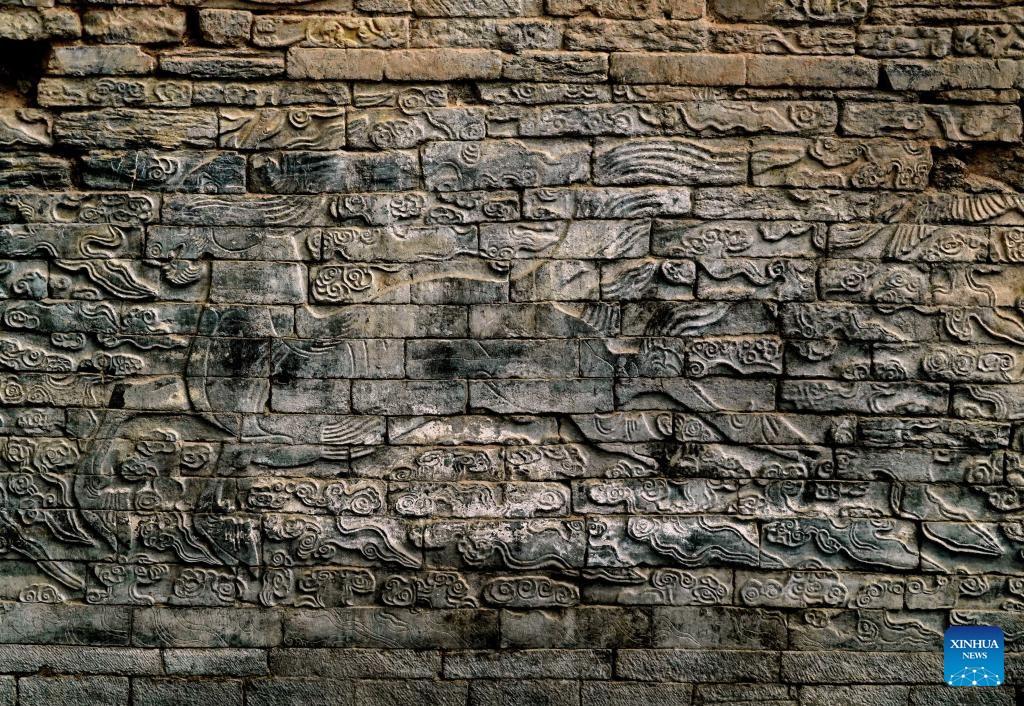
"It is an important discovery that enriches and rewrites the art history of the Song Dynasty," he added.

Zhouqiao Bridge was built between 780 and 783 in the Tang Dynasty (618 907) across the Grand Canal, a vast waterway connecting the northern and southern parts of China. It was a landmark structure in the central axis of Kaifeng City and was buried in 1642 by mud and sand due to the flooding of the Yellow River. Archaeological excavation of the Zhouqiao site was launched in 2018.
So far, a total of 4,400 square meters of the site have been excavated, and 117 sites of remains and ruins have been found.
Photo taken on Sept. 21, 2022 shows auspicious patterns of traditional Chinese culture on a stone mural discovered in the Zhouqiao relics site in Kaifeng City, central China's Henan Province.(Xinhua/Li An)It started from the folk tradition of paining babies with black. Wa people used to paint a black colour mark in between the eye brows of the babies by using soot from the boiler. The purpose of this is to prevent babies from evil. Later this tradition turned from using soot to mud in the fields. Today they use this specially formed murky mixture instead of mud from the field. During the carnival everyone paste mud on each other. Smearing mud on your face means happiness for a year. Smearing from head to toe means the happiness for life” said Mr. Tian KaiZheng. Within a couple of hours, these tubs of good fortune all get emptied. Before the main mud event, Changyuan Monihei plaza host an inter village performing art competition. Many clans of the Wa community were once separated by sheer mountain ridges. With little contact those separated secluded villages created their own distinct clothing, songs and dance. Like many on the stage, 42 years old Li yigai is not a professional dancer. She has taken a day off from working on her family land where she grows rice, corn and tobacco. “we are representing the Nuoliang village and showcasing the songs and dance of the Wa people. Local culture of each village is different even though we all are Wa people. It is a

little bit disappointing to be in second place at this time. Usually we are always the champions. But we are having fun anyway.” Said Ms. Li. Ms. Li is aware that this friendly contest is just a warm up. The villagers take their places standing by for the pinnacle of the Monihei carnival. The wooden drum is the most sacred symbol of the Wa culture.
They believe that it sends their wishes to god. Sound of those wooden drums and traditional songs accompanied by mesmerizing hair dance, which is a celebration of female beauty and maturity. Before the dance is finished, someone jumps the gun and opens the flood gates. From this moment everyone begins to smear pre prepared mud on each other. Today’s Monihei carnival accompanied by synthetic drums and amplified DJs. But its traditional meaning hasn’t been lost. Mud on a child brings safety and health. For grandpa, mud wishes them a long life and young lovers use it to show their affection. For women, black is a sign of beauty. Here in Monihei carnival they believe that the dirtier, the crazier the better. “it is so exciting. So wild. People come from all different places and you don’t even know who you’ve tagged. Here we are just like a family in one same nation.” said Ms. Li. Yunnan was once considered as the rural back waters of China. Those memories of isolated, remote and poor ethnic minorities are already being washed away. Modern Yunnan
is harnessing its cultural and biological diversity in a new era of high tech sustainable development. Provincial capital Kunming city is on of the china’s fastest growing cities with a population of 6.7 Million. Kunming sits almost 2000 meters above sea level on the Yunnan Guizhou plateau. Kunming's mild highland climate earned its nick name “Spring City”. Here flowers bloom all year around and flower trade is a booming business in the city. Yunnan flower center is the main flower trading platform in the city and more than 6 billion flowers are sold here annually. That is about 12000 flowers per minute. Buyers make their move to the flower center after sunset. Traders first visit the warehouse to examine the fresh stock and select required lots according to their buyer’s requirements.

Flowers stay fresher at night and can be prepared for shipping on time by the morning flights. The Yunnan flower center is a fully digitalized trading platform with modern technology. There are three digital clocks displayed on multi functional screen ticks down in price. The First person to hit the button on their desks wins the lot. Each deal is made in seconds with three offers to look at. Simultaneously new requests appear on traders' mobile phones. “ I feel happy when I manage to grab good quality stock for a cheaper price. There is a bit of skill following the speed of the clock and choosing the right moment to pres the button. It’s simple, you will get it with practice”. Said Hao Jianxiang a regular wholesale trader at Kunming flower center. Yunnan’s most lucrative secrets are living things. In southern Yunnan Hekai is a village with just 4000 people and they guards the natural treasure more precious than gold.
 Yunnan…. vibrant cultures..
Yunnan…. vibrant cultures..
Yunnan…. vibrant cultures..




The holy fish festival kicks off with a traditional dragon boat race. “Our team is made up of good friends brothers and sisters. We all grew up together and we are very united. We are sure that we’ll win. When we hear the drum beat, we start rowing and we continue according drum the beat. If everyone makes a consorted effort, the dragon boat should move at top speed” Said Xiang Sanmeng brothers, Dragon boat team members at the Menglian holy fish festival. Anyhow Xiang Senmeng brothers’ team falls far behind in the boat race. But in this festive atmosphere it is hard to separate winners and losers. “ we always look forward to the holy fish festival every year. Because it is the Menglians’ biggest festival.’’ said Mr. Xiang. Back in the home, Boys father gearing up for the main event in the festival. Mr. Bo Ai is no stranger to caching fish. In his youth he used traditional fishing techniques to make a living. “I work in the field and raise pigs. I came to Nanyun to find a wife. We used to use a tool made of leaves and a team of people would chase the fish to the tool. Another way is that we use to build a little house with a floor made of net.
When the fish comes in we lift the house”
Said Mr. Bo Ai Han Bian. The fish he caught would be smoked and sold
at the market for 5 cents per carton. Bo struggled to break free of poverty. But he soon benefited from the governments many agricultural reforms. In 2006 farmers and fishermen no longer need to pay any tax to the government, ending the two and half thousand year practice. Mr. Bo was able to save up for his house in the heart of the Nanyun and raised three healthy sons. “Now I am old. It is up to them how they lead their lives. They can have a happy life.
People flocked to the river with lotus flower lanterns in hand. Here they pray for the future or remembering the past, they release their floating candles and light a way to another year. Finally the last ritual closes the holy fish festival. Group of Buddhist monks release plenty of live fish back to the Nanely river. Beginning around the 10 century AD fertile river like this one nurtured the powerful Dai kingdoms. Festivals and religious events play a vital part of their rich culture through out history. Further east straddling the banks of the Mekong that is known in China as the Lanchang river lies the heart of the once expensive dominion.
Xishuangbanna is a Dai autonomous prefecture. The city of Jing Hong was the center of the Sichuan Banna Dai kingdom for nearly 800
years. Though the Dais make up the majority of the region’s 1.1 million inhabitants, huge influx of Han Chinese people since 1950s is rapidly changing the face of the town. Professor Zhu Liangwen has made it his lie’s mission to protect the traditional spirit of the Dai. His main interest is traditional residential houses and architecture. “It is easy to build a house, But how do you do it while satisfying residents, using new materials and the same tine retaining the traditional style…! I’ve devoted my whole life for this study” Said Professor Zhu.
seen all across Yunnan. According to legends, the design was inspired by the movements of the peacock. The roof repels monsoon rain on all sides, like a peacock with it’s wings spread out and head to the ground. The living area stands on stilts to protect from flooding and mosquito borne disease. shared with the world.
Jaliya Samarakoon. ASLCSCC






A look at a man, his craft and an obscure art
Of the myriad inventions from antiquity that have forged their way into the modern day, the umbrella (伞 sǎn) is one of the few to have retained its shape, function and beauty. Known to many ancient civilizations, the umbrella has garnered mythological, religious and social connotations, and the ancient craft of traditional umbrella making in China is still popular. Beijing boasts a variety of shops selling uniquely crafted umbrellas. In the historic Dashilanr (大栅栏) business street area, Chang Tao's Qinfenghanyue Craft Shop (秦风汉月油纸伞) is one of the many places where this


craft is still a lifestyle.

Chang is a master of this art and has perfected his technique and aesthetic through years of devotion. A fervent sentinel of traditional Chinese culture, Chang painter, poet and umbrella makerwas born in 1978 in Guangxi Zhuang autonomous region. Early in his career as a painter, he was asked to donate a teahouse and decided to incorporate the traditional handmade umbrellas he remembered from his childhood in rainy Guangxi. But, he realized that none of them matched the beauty or quality of the ones his grandfather made. So he established a small studio in Guangxi combining modern techniques with a love for the art of umbrella making. Artists in Guangxi and Beijing now work under his guidance, following his
86 steps to making a single umbrella, a process that sometimes takes 20 days.
The bamboo is harvested from the wilds of Guangxi for processing the following year. The bamboo to be used in the umbrella's construction is soaked in water, steamed, dried in the sun, polished and carved.
One of the most complicated steps is the umbrella's skeleton, which is stretched, assembled, glued and dried. The paper is a thin cotton, brittle during the work process; it is soaked in tung oil (桐油 tóngyóu) for nine days to harden and waterproof it. The final step is adding calligraphy or painted scenery to give the umbrella its traditional look and artistic identity.

Xiang embroidery is well known for its time honored history, excellent craftsmanship and unique style. The earliest piece of Xiang embroidery was unearthed at the No 1 Tomb of Mawangdui, Changsha City of the Han Dynasty (206BC AD220). The weaving technique was almost the same as the one used in modern times, which demonstrated that embroidery had already existed in the Han Dynasty. In its later development, Xiang Embroidery absorbed the characteristics of traditional Chinese paintings and formed its own unique characteristics. Xiang embroidery experienced its heyday at the end of the Qing Dynasty (1644 1911) and in the early Republic of China (early 20th century), even surpassing Su embroidery. After the founding of the Peo-
ple's Republic of China, Xiang embroidery was further improved and developed to a new level. Xiang embroidery uses pure silk, hard satin, soft satin and nylon as its material, which is


connected with colorful silk threads. Absorbing the spirit of Chinese paintings, the embroidery reaches a high artistic level. Xiang embroidery crafts include valuable works of art, as well as

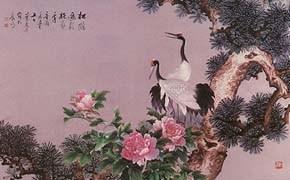


















 Photo of
Photo byAruna Hapuarachchi (ASLCSCC) Minority Village Kunming, China 2019 July
Photo of
Photo byAruna Hapuarachchi (ASLCSCC) Minority Village Kunming, China 2019 July